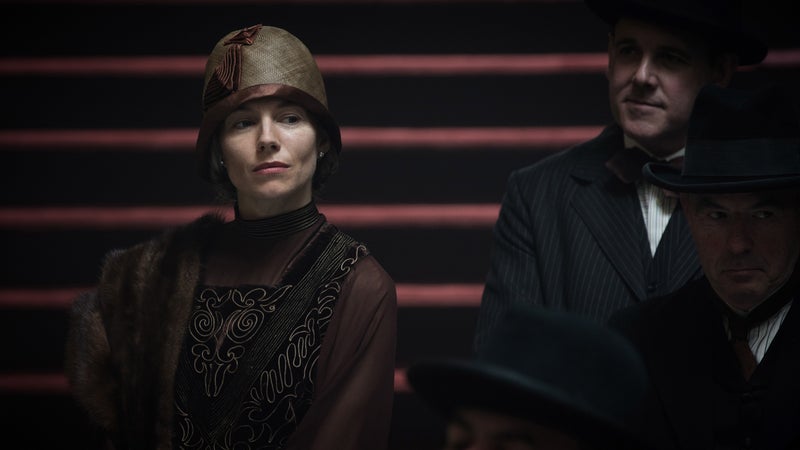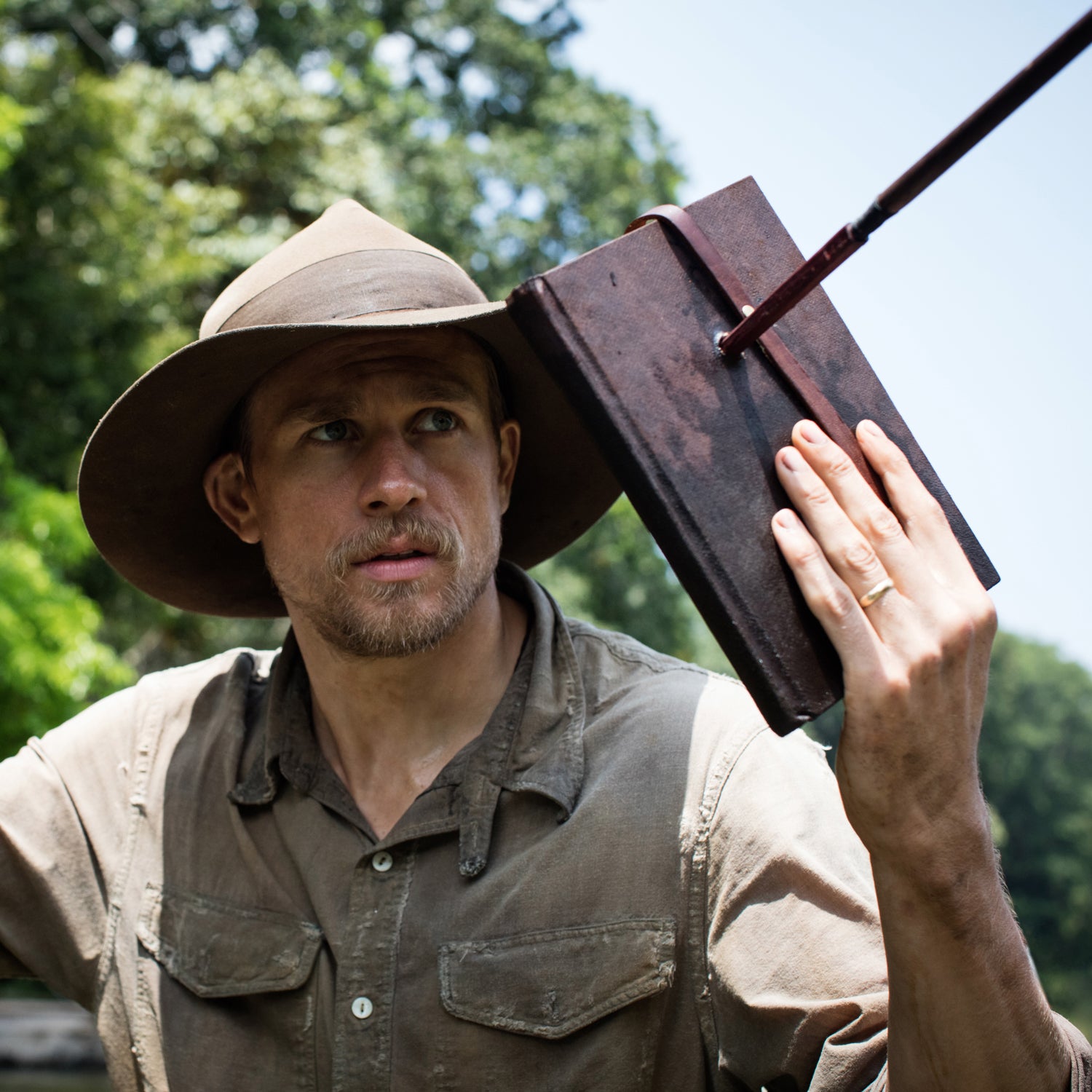In 1925, the British explorer Colonel Percy Harrison Fawcett�� in the Brazilian Amazon. He was on a personal quest to uncover a lost civilization, which he named��Z.��At 57, Fawcett was making his eighth trip to the region,��this time��accompanied by his 21-year-old son, Jack, as well as his son’s friend, Raleigh Rimell. None of them were ever seen again.��
��(playing in theaters now)��is��a luminous—if unabashedly fictionalized—screen adaptation of about the enterprising colonel, which is itself��an expansion of an published in The New Yorker in 2005.��Viewers seeking��Indiana Jones minus the camp might be delighted. (Indeed, Z has been ��as an old-school adventure epic.)��But the film ultimately suffers from the sanitization of its central character. The historical Percy Fawcett was fascinating in his��recklessness. The guy in the movie is just a bore.
Not that he doesn’t have a taste for adventure. Late in the film, the younger Fawcett convinces Percy (played by an eerily Brad Pitt–like Charlie Hunnam) to make that final journey and take him along. Like any responsible father who receives a request from his son to travel to a remote and deadly jungle, Percy’s response is��essentially, “Ask your mother.”

That would be Nina Fawcett (Sienna Miller), the steadfast wife who puts up with her husband’s wanderlust. Early on��we see Nina struggle with a corset (she’d prefer to wear trousers) and it soon becomes evident she’s fighting against constraints that go well beyond sartorial conventions. It turns out that what Nina would truly��prefer is to accompany her husband on his adventures, instead of waiting around to introduce him to his progeny whenever he returns from an extended voyage. That the strained dynamic of the Fawcetts’ marriage is central to the film’s narrative is a reminder that, as Manohla Dargis notes in her , The Lost City of Z is a film set in the era of colonialism��but imagined through a “sensitive, contemporary lens.” When her husband tells her that women aren’t tough enough to endure the , Nina counters that no man would be able to endure the pain a woman experiences during childbirth.��
Fawcett’s Edwardian-era��male chauvinism points to a central dilemma for the film. How do you portray a sympathetic protagonist—one whose actual worldview is unpalatable by contemporary standards—while still maintaining some degree of historical accuracy? The Lost City of Z��clearly attempts to do this, but one wishes it hadn’t. In its zeal to create a more agreeable version of Percy Fawcett, the film denies itself the opportunity to engage with questions of obsession and madness in a meaningful way. Instead��the audience just gets platitudes like, “We are all made of the same clay.”��

To be clear, director��James Gray makes no bones about taking artistic license in the movie,��which includes nods to other jungle epics like and . At the end of the day, there’s little sense in fact-checking a tale that includes a scene in which Fawcett somehow manages to smuggle an elderly female psychic (Russian, no less) into a World War I��trench to give him a palm reading (“Your soul will never be quiet, until you find this place…. It is your destiny!”). Similarly, the film’s improbable take on how the Fawcetts��(Raleigh doesn't make it into the film) meet their end makes it clear that we are in the realm of fantasy. (And is it superfluous to point out that, whether he's dodging arrows in the rainforest or enemy fire at the Somme, Hunnam always looks like he’s in a Ralph Lauren shoot?)
But even as The Lost City of Z positions itself as blockbuster-style entertainment, no historical drama can be entirely free of the history that inspired it.��
If Nina Fawcett’s character feels forcibly contemporized at times, we are still left with a semiplausible (if not strictly believable) portrait of an erudite and adventurous woman struggling against the biases of her time. It’s hard to be as generous with the film’s portrayal of the colonel.��
“These so-called savages have cultivated the jungle where no one thought it could be done. We’ve been so arrogant and contemptuous,” Fawcett says at one point while wistfully beholding a scene of Amazonian agriculture. Back in London, the newly enlightened explorer puts the jeering, incredulous members of the�� in their place. The pieces of pottery he has brought back from the jungle suggest an advanced civilization, “one that might well pre-date our own.” He is contrite about the way the white man��has mistreated the natives. ����
Yeah, right.��
Since The Lost City of Z was released, of a flawed man who, while genuinely concerned with the preservation of native cultures, was nevertheless a product of his time—i.e. a bigot. In his��New Yorker article, Grann quotes Fawcett’s reductive claim that there are three types of Indians: “The first are docile and miserable people . . . The second, dangerous, repulsive cannibals very rarely seen; the third a robust and fair people who must have a civilized origin.”��
John Hemming, the explorer and scholar of Amazonian tribes who was a principal source for Grann’s book, just , wherein he declares that Fawcett was “a surveyor who never discovered anything, a nutter, a racist, and so incompetent that the only expedition he organized was a five-week disaster.” Hemming concludes his article by recommending that those seeking adventure narratives are better off consulting the writings of “real explorers.” One contemporary example of the latter is the traveler and writer Hugh Thomson, who also just skewered Percy Fawcett (that “blundering and racist flake”) . He suggests that filmmakers consider making a movie about a “real hero” like Hiram Bingham, the American academic credited with rediscovering Machu Picchu.��
But the problem with The Lost City of Z is not that it chooses Percy Harrison Fawcett as its subject. As it makes clear in a subplot involving a conflict between Fawcett (good guy!) and the Arctic explorer James Murray (bad guy!), this movie��wants unambiguous heroes and villains. It would have been more compelling if the filmmakers had just acknowledged the (considerable) limitations of their real-life protagonist's worldview��and spent less time trying to twist him into��an impossibly woke��moralizer.��
Even in the face of imminent annihilation, Fawcett is tiresomely noble. “Nothing will happen to us that is not our destiny,” he tells his son, who, understandably, seems less than reassured. Despite all of Fawcett’s grand pontification, the central question of the film—Why does he become addicted to the jungle?—is never convincingly addressed. It made me long for a more nuanced account of self-destructive obsession, like .��
Rendering characters as caricatures might work for screen adaptations of Greek myth or (the sad equivalent of our time) Marvel comics, but it’s difficult to pull off when your source material was once alive and kicking.
Real people are just too interesting.��


